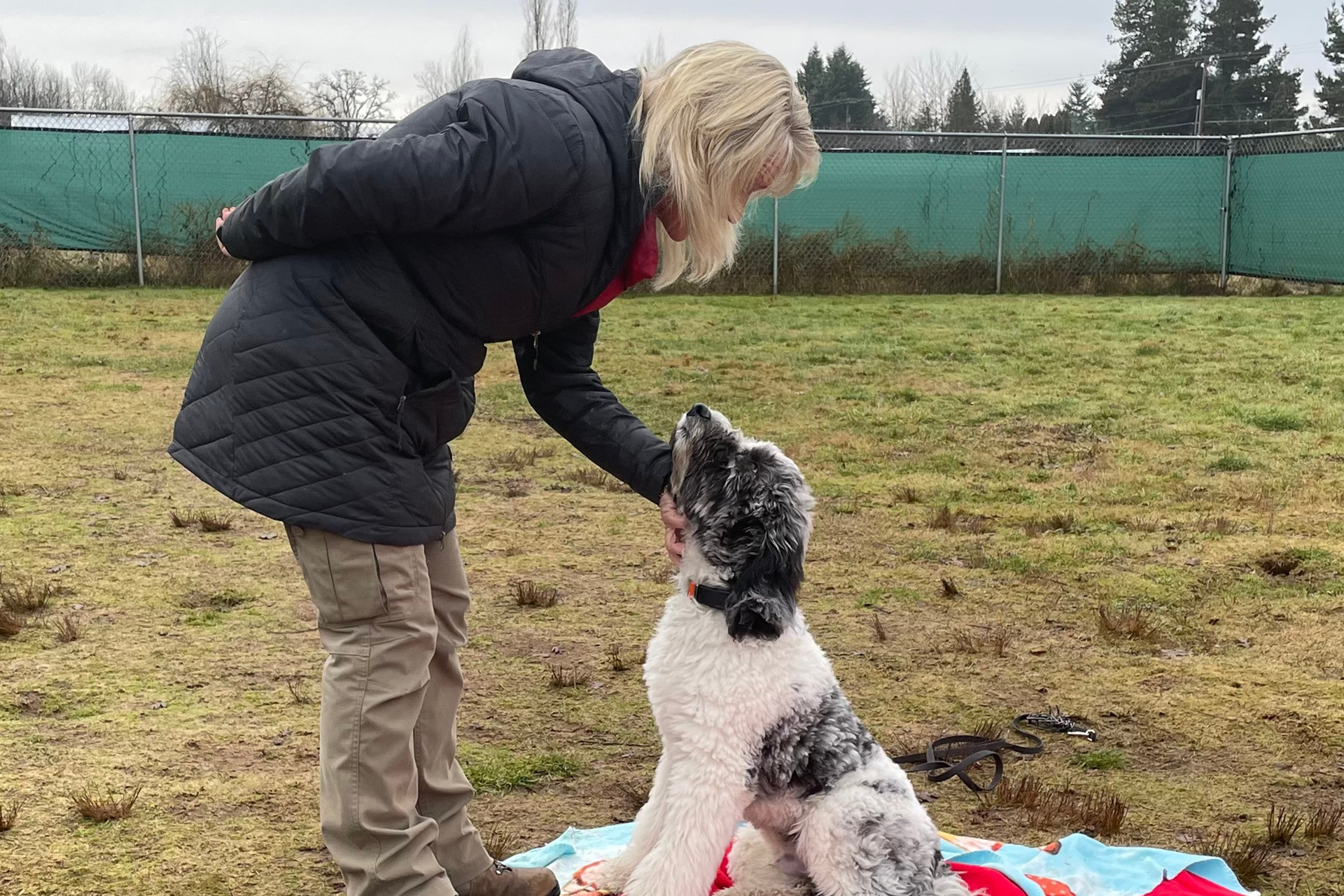8 Expert Tips For Non-Expert Dog Owners
We all want to do right by our pets and show them the confident leadership we see from experienced TV dog trainers like Cesar Millan or Northwest Battle Buddies’ Shannon Walker. Because of them, we know that even dogs who are anxious, fearful, or who have developed bad habits like uncontrollable barking or resource guarding can be rehabilitated. But sometimes, it feels like you need to be an expert to implement some of their techniques, especially when dealing with dogs with serious challenges. The good news is that there are a few totally simple things you can do to improve your relationship with your dog, even if you’re not an experienced dog trainer. Here are eight great ones to get you started.
Want to support dogs that are working towards becoming professionally-trained PTSD service dogs?
-
Don’t make a big deal out of comings and goings
We know it feels so special to have your pup go crazy when you walk in the door, but encouraging that kind of excitement is a setup for separation anxiety or just plain old anxiety later on. So whether you’re leaving on a trip or simply heading to work for the day, don’t make a big show of saying goodbye to your pup, and when you return, wait until your dog is calm to greet them and show affection.
-
Give affection at the right time
This one is tough and somewhat counterintuitive for some dog owners but essential for helping your pup to cultivate a calm, positive state of mind. So follow Walker’s motto: “Affection is agreement.” If your dog is anxious, excited, growling, or exhibiting any kind of unwanted behavior, withhold affection until they are in a calm, submissive state.

-
Walk the talk
Walking with your dog is the simplest and strongest way to bond with your pet and show them you are a strong, confident leader. Simply put, it’s the foundation for your entire relationship: no amount of backyard time will suffice. So carve out enough time for the exercise your dog needs, leave your phone at home, and commit to walking every single day.
-
Hone your walking skills
We’re sure you’ve seen plenty of dogs pulling their owners down the street, and while this way of walking is probably the norm, it’s most definitely not the best for your pet. Teach your dog to walk alongside or behind you, which can help them to feel safe as well as reinforce your position as the leader in the relationship.
-
Train every day
As Walker says, “Every day is a training day.” Whether you’re doing it deliberately or by default, each day, you are teaching your dog something about yourself and how they should be in the world. And since dogs live in the moment, each day is a new opportunity to start fresh. So make it a point to be the pack leader on a daily basis and to put some time in showing your dog why they should trust you, whether that’s through walking, an obedience training session, or just sharing the space with respectful boundaries.

-
Give corrections at the right time
Your dog is living in the moment, so it is never effective to punish them for chewing your favorite shoes or peeing on the rug while you were out of the house. Learning to correct your dog is an essential skill, but it only works when you do it at the right time, with the right energy and intention.
-
Nail the feeding ritual
Feeding your dog at specific intervals for a period of 5-15 minutes will help your pup develop a healthy food drive and bolster your position as the provider in the relationship. In addition, you should never pet or bother your dog while they are feeding. To learn more about how to properly feed your dog, watch this clip.
-
Let your dog be a dog
Many pet owners are very, (very) guilty of ascribing human traits, motivations, and emotions like sadness or regret to their animals. As fellow mammals, our dogs do have a limbic system that allows them to have a sensory experience, but they simply do not experience emotions the same way humans do. Instead of treating them like a human, respect your pet enough to learn their language, so you can provide the direction and protection they need in order to have a happy and healthy life.
It’s thanks to the excellent training of Shannon Walker that our Northwest Battle Buddies service dogs are so well prepared for their life of service. To learn more about what it takes to train a service dog, check out Koa’s Journey as he trains to become a Northwest Battle Buddy!



